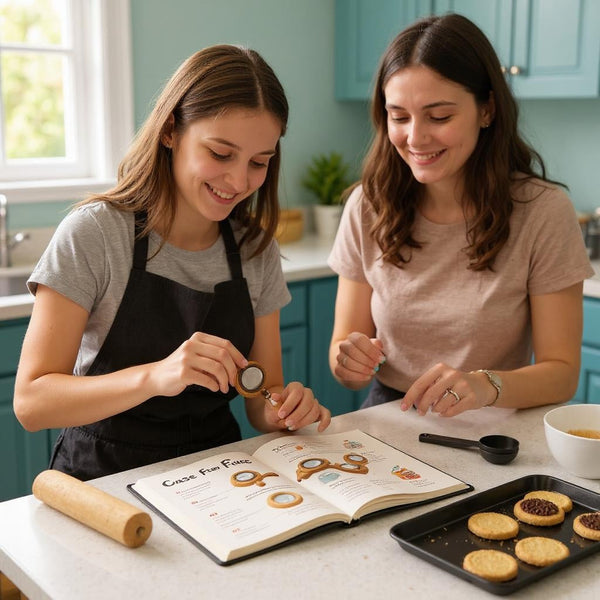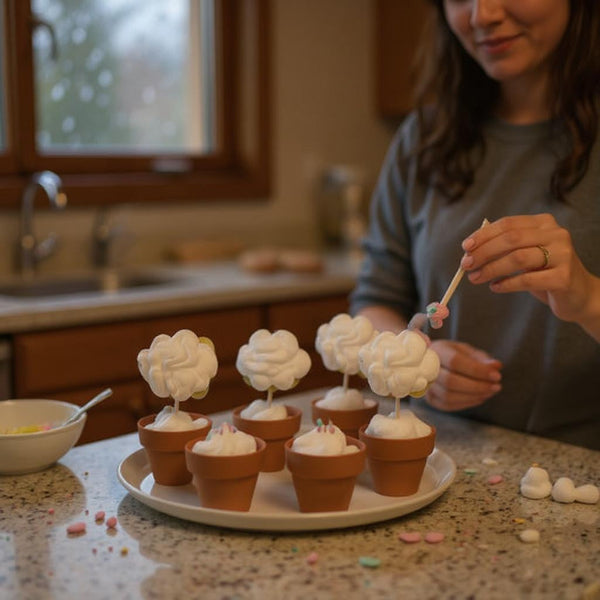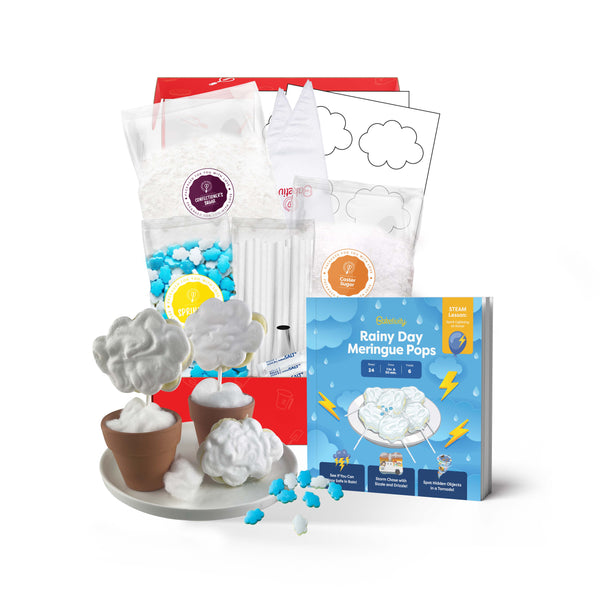Are you ready to embark on a delicious adventure? With a cooking homeschool curriculum, you can unlock your child’s culinary creativity while providing them with valuable life skills. In this article, we will explore the concept of culinary creativity, the structure of a cooking homeschool curriculum, and the many benefits it offers. We will also provide tips on how to implement the curriculum effectively and evaluate your child’s progress along the way. The curriculum includes access to all the lessons, allowing for flexible learning at any time and from anywhere.
Exploring the Concept of Culinary Creativity
When we think of creativity, we often picture artists painting or musicians playing instruments. However, creativity extends far beyond these traditional realms. Teaching basic kitchen skills is a foundational step in nurturing culinary creativity. Culinary creativity involves using your imagination to create unique and delicious dishes. By nurturing this creativity in your child, you are encouraging them to think outside the box and explore different flavors and techniques. But why is culinary creativity important in homeschooling? Let’s find out.The Importance of Culinary Creativity in Homeschooling
Culinary creativity goes hand in hand with homeschooling as it provides a rich learning experience. A cooking class can be an exciting way to engage children and foster their culinary creativity. By incorporating cooking into your homeschool curriculum, you are not only teaching your child about nutrition and food preparation, but also fostering their creativity and problem-solving skills. Furthermore, cooking encourages experimentation and helps children develop resourcefulness, adaptability, and attention to detail. These skills are not only useful in the kitchen but also transferable to other areas of their lives.How Culinary Creativity Enhances Learning
When children engage in culinary activities, they are not just following a recipe. Each cooking lesson integrates various academic subjects, making learning fun and interactive. They are learning a variety of subjects in a hands-on and enjoyable way. Math comes into play when measuring ingredients, understanding ratios, and making conversions. Science is involved in understanding the chemical reactions that occur during cooking. Reading and comprehension skills improve as children follow recipe instructions. History and culture are explored as they learn about different cuisines and their origins. Therefore, cooking provides a well-rounded learning experience that integrates various disciplines. Moreover, culinary creativity offers a unique opportunity for children to develop their sensory skills. As they experiment with different ingredients, textures, and flavors, they become more attuned to their senses of taste, smell, and touch. This heightened sensory awareness not only enhances their culinary creations but also helps them appreciate and analyze food in a more nuanced way. In addition, culinary creativity can foster a sense of independence and self-confidence in children. When they successfully create a dish from scratch, they experience a sense of accomplishment and pride. This boosts their self-esteem and encourages them to take on new challenges in the kitchen and beyond. Furthermore, culinary creativity can be a gateway to cultural exploration. Through cooking, children can learn about different cuisines from around the world, gaining a deeper understanding of diverse cultures and traditions. They can explore the unique ingredients, cooking techniques, and flavors that define each cuisine, broadening their horizons and cultivating a sense of global awareness.Why Incorporate Cooking into Your Homeschool
Incorporating cooking into your homeschool curriculum can be a valuable addition to your child’s education. Cooking is a life skill that can benefit kids in many ways, from promoting independence and self-sufficiency to teaching important skills such as measurement, following instructions, and time management. Cooking can also foster creativity and experimentation in the kitchen, and can be a fun and bonding experience for the whole family. By incorporating cooking into your homeschool, you can provide your child with a holistic education that combines classroom learning with real-life skills.The Structure of a Cooking Homeschool Curriculum
A cooking homeschool curriculum consists of carefully crafted activities and lessons that teach children the essentials of cooking. Utilizing various cooking resources can make the curriculum more engaging and manageable for parents. Let’s dive into the key components that make up a comprehensive curriculum.Key Components of a Cooking Homeschool Curriculum
- Foundation of Basic Skills: The curriculum consists of structured cooking lessons that teach essential skills such as knife handling, food safety, and kitchen organization.
- Exploration of Ingredients: Children learn about different ingredients, their nutritional value, and how they can be combined to create mouth-watering dishes.
- Recipe Development: As children gain confidence, they are encouraged to create their own recipes, fostering their culinary creativity.
- Global Cuisine: The curriculum introduces children to cuisines from around the world, expanding their culinary horizons and teaching them about cultural diversity.
- Specialty Techniques: As children progress, they explore more advanced techniques such as baking, grilling, and pastry-making.
Designing a Year-Round Cooking Curriculum
One of the greatest advantages of a cooking homeschool curriculum is its flexibility. You can design a curriculum that fits your family’s schedule and interests, allowing for year-round learning. Incorporating fun recipes can keep the curriculum exciting and engaging for children. Consider incorporating seasonal ingredients and holiday-themed recipes to keep things exciting. Remember to plan age-appropriate activities and gradually increase the complexity of the recipes and techniques as your child’s skills develop. When designing a year-round cooking curriculum, it can be beneficial to align the lessons with the changing seasons. For example, during the warm summer months, you can focus on refreshing salads, chilled soups, and barbecuing techniques. This not only teaches your child about seasonal produce but also allows them to explore different cooking methods suitable for outdoor cooking. As the weather transitions to fall, you can introduce your child to the art of preserving and canning. This teaches them valuable skills in food preservation and allows them to create homemade jams, pickles, and sauces using the abundance of fruits and vegetables available during this time of year. During the winter months, you can delve into the world of comfort foods and hearty meals. This is the perfect time to teach your child about slow cooking, braising, and baking warm desserts. They can learn how to make comforting stews, casseroles, and freshly baked bread, filling the house with delicious aromas. Spring brings a fresh start and an opportunity to explore lighter and vibrant dishes. Your child can learn about the benefits of using fresh herbs, edible flowers, and seasonal greens. They can experiment with creating colorful salads, herb-infused dressings, and light pastas, celebrating the arrival of new growth and flavors. By incorporating seasonal ingredients into your cooking homeschool curriculum, you not only provide your child with a well-rounded culinary education but also teach them the importance of sustainability and eating with the seasons.Essential Cooking Skills for Kids
Teaching kids essential cooking skills is a crucial part of any homeschool cooking curriculum. These skills include knife handling, measuring ingredients, and understanding cooking techniques. Knife handling is a fundamental skill that is crucial for children to learn, as it teaches them how to safely and effectively use a knife in the kitchen. Measuring ingredients is another vital skill that teaches kids about fractions, ratios, and proportions. Understanding cooking techniques, such as boiling, steaming, and sautéing, is also essential for kids to learn, as it teaches them how to prepare a variety of dishes.Benefits of a Cooking Homeschool Curriculum
What makes a cooking homeschool curriculum truly special? A well-designed cooking curriculum helps kids cook independently, boosting their confidence and skills. Let’s explore the benefits it offers.Developing Valuable Cooking Skills through Cooking
Cooking is a life skill that everyone should learn. Essential skills taught include knife handling, measuring ingredients, and understanding various cooking techniques. By introducing your child to cooking at an early age, you are equipping them with the ability to nourish themselves and others throughout their lives. From meal planning to grocery shopping, your child will develop practical skills that will serve them well in adulthood.Fostering a Love for Learning and Cooking
Traditional homeschooling can sometimes feel monotonous, but cooking brings a burst of excitement and joy. Kids cooking programs can make learning fun and interactive. The hands-on nature of cooking captures your child’s attention and encourages a love for learning. As they see their creations come to life, they become motivated to explore new recipes and techniques. A cooking homeschool curriculum also provides opportunities for family bonding. Cooking together creates lasting memories and instills a sense of pride and accomplishment in your child.Implementing a Cooking Homeschool Curriculum
Ready to embark on your culinary journey? Here are some essential tools and resources to get you started.Necessary Tools and Resources for a Cooking Curriculum
Basic Kitchen Equipment: Ensure you have essential tools such as knives, cutting boards, pots, and pans. Kids watch instructional videos to learn cooking techniques before practicing on their own. Invest in age-appropriate utensils and safety equipment for your child as well. Cookbooks and Online Recipes: Stock your kitchen with cookbooks tailored to children’s cooking or explore reputable cooking websites and blogs that offer kid-friendly recipes. Local Culinary Resources: Take advantage of your community’s resources. Look for cooking classes, farmers’ markets, and local farms that offer hands-on experiences.Meal Planning and Grocery Shopping
Meal planning and grocery shopping are integral parts of a comprehensive homeschool cooking curriculum. These skills teach kids about organization, budgeting, and decision-making. By planning meals and making grocery lists, kids can learn about nutrition, meal planning, and food safety. Grocery shopping can also be a fun and educational experience for kids, as they can learn about different types of food, their origins, and how to make healthy choices.Food Safety and Nutrition
Teaching kids about food safety and nutrition is an essential part of any homeschool cooking curriculum. Food safety is paramount in any kitchen, and teaching kids about hygiene, proper food storage, and safe cooking temperatures is crucial. Nutrition is also an important aspect of cooking, as it teaches kids about healthy eating habits, different types of food, and how to make informed choices. By incorporating food safety and nutrition into your homeschool cooking curriculum, you can provide your child with a comprehensive education that prepares them for a lifetime of healthy eating and cooking.Overcoming Challenges in Teaching Kids a Cooking Curriculum
As with any homeschool curriculum, challenges may arise. Here are some common ones you might encounter and how to overcome them:- Time Management: Plan your cooking activities in advance and involve your child in the meal-planning process. This way, you can integrate cooking seamlessly into your homeschool schedule. The curriculum allows children to learn at their own pace, accommodating various learning styles.
- Picky Eaters: If your child is a selective eater, use cooking as an opportunity to introduce new ingredients and flavors in a fun and non-threatening way. Encourage them to explore different cuisines and experiment with ingredient substitutions.
- Cleanup: Cleaning up after cooking can sometimes be overwhelming. Teach your child the importance of maintaining a clean and organized kitchen and involve them in the cleanup process.




